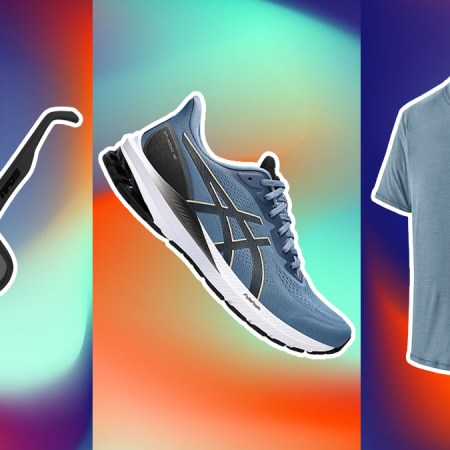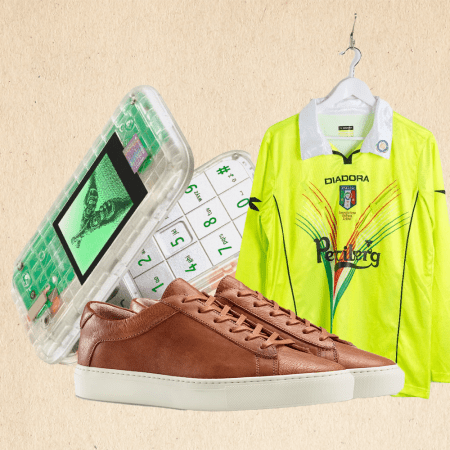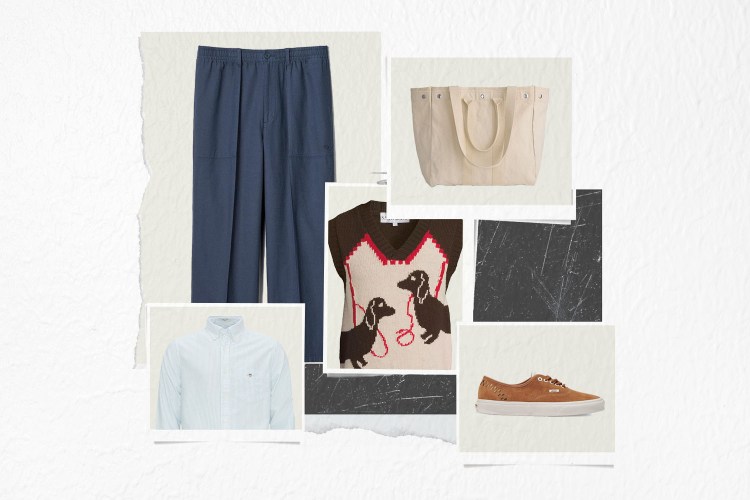The shoes that I’ve logged the most miles in? The Saucony Endorphin Pros. I really loved those shoes. They were my best-traveled trainers, too. I ran them through Prospect Park, Death Valley, Arthur’s Seat. But at a certain point, they were absolutely donezo. The traction was gone, the fit was too tight and even the color — originally a crisp racing white — morphed into a pukey beige.
I kept them in the game far too long, and for all the usual reasons: I felt comfortable in them, I was wary of breaking in (or dropping another $200 on) a new pair, and even with GPS tools at my disposal, I legitimately didn’t realize how long I’d been wearing them. The official count: more than 700 miles and nearly 100 hours of running.
It’s massively important for your health and happiness as a runner, though, to be able to recognize exactly when to replace your running shoes. The old prescription for most runners — swap ’em out once a year — may sound reasonable, but there are a variety of more relevant factors (from body weight to pronation) and pertinent clues (from collapsed heel counters to worn-out toe boxes) that should actually influence that timeline. Here’s what you need to know.
How You Should Actually Warm Up Before Your Runs
If you haven’t yet, it’s time to ditch static stretchingMonths vs. Mileage
The entire running world is in unanimous agreement on this one: replace your shoes based on mileage run, not months worn. Running is a fickle pursuit; it’s not like when you were in grade school playing for a basketball or soccer team, when each season had the same amount of practices, scrimmages and games. Back then, buying a new pair of shoes each year was a no-brainer. (It was also probably a necessity, if your feet were growing.) But as an adult runner, your commitment to your running routine can easily vary from year to year, based on training goals, injuries, life events and even weather.
With that in mind, it’s in your best interest to either jot down an estimate of how much mileage you’re running each week, or start using Strava, Google Fit, Apple Health or RunKeeper to keep track of every run. How many miles is too many miles for a pair of shoes? That answer is slightly up for debate. The brains at Asics recommend about 450-550 miles as a cap. REI says 300-500. One former shoe engineer at New Balance also says 500.
We can take 500 as a cap, which sounds like a lot on the surface. But even a relatively light running habit — three-mile runs, four days a week — will only get you through about nine months of the year. And if you’re tackling full-on marathon training, which inevitably includes multiple 50-mile weeks, it’s likely that you’ll max out a single pair of shoes in a 16-week program, if not sooner. Whatever your level or goals, though, it’s important to start with a “don’t pass this point” number in your head, and to not fight it when you get close. If you forget, well, you can always just look down and inspect the shoes.
What to Look for in Your Shoes
The first few times you wear a pair of running shoes, it’s common to notice hotspots or blisters on your feet. They’ll go away as your feet toughen up, assuming you’re wearing the right size, and have coughed up a few bucks for proper running socks. But if that same pair of shoes is giving you blisters — or other, inexplicable aches and pains — half a year later, it’s likely that the cushioning on your shoe is completely worn down. It’s essentially become a new shoe, and one that isn’t equipped to soften the blow of repeated thwacks against the pavement.
Practice inspecting your shoes for signs of wear. First, and most obviously, are there are any tears or holes in the toe box? In the back, is the heel still sturdy, or has it collapsed inward? How about the outsole? Has its rubber traction system faded away?
For that final question, take advantage of whatever “design” the shoe manufacturer used for the outsole — usually a mix of contrasting colored lines. If they’re almost indiscernible (or the white of the midsole is starting to show in areas known as “bald spots”), you’ve got your answer. One last eye test: place your shoes on the ground and look at them from the back. Are they symmetrical? Does one appear to be “shaved” a bit on its side?
How’d You Even Get Here?
A shaved-down running shoe is the typical, unwelcome endgame of over-pronators, a fancy term for runners whose feet roll inward as they move. It occurs because the outer part of their heel generally hits the ground first. The foot rolls inward to try and flatten the arch and the shoe loses a little bit of rubber in the process. It’s a cyclical situation, which indicates a need to throw out your current pair of shoes and see a podiatrist (who will offer anything from orthotics to stretches to a video gait analysis).
There isn’t always a clinical term for why a running shoe shouldn’t be used anymore. For instance, running on cement will wear out a shoe quicker than running on dirt trails (unless, of course, the trails are dappled with rocks and thorns). Heavier people will cycle through shoes quicker than lighter people. Climate also plays a role: Hotter paths (especially when pavement is involved) will erode a shoe, but so will rainy regions, where shoes are likely to take on water and shrink a bit in fit during the drying process. One last wild card to consider? How you take your shoes off. If you rake them back with the other shoed foot (or worse, walk around the house atop the back heels), you’re doing some damage.
Bolster the Rotation
To that point, too many of us treat running shoes as all-purpose trainers. We wear them for walking the dog, gardening in the yard or even for lifting at the gym (a big no-no, which we get into here). Not only should your running shoes be religiously reserved for running alone, you should probably consider getting extra pairs. At the very least, have one bulkier pair for difficult weather conditions — reinforced runners that will help you find grip in the snow or on wet asphalt, which ensures you’re not ruining the grip on your everyday pair.
You can specialize much further. For instance, once you’ve run in a pair of shoes for a month and know you love them, pick up an identical pair right away. That way you won’t play games or get cold feet when nine months later arrives, and you really need to buy a new pair. Plus, you always have a dry pair (there’s no need to flash-dry a wet pair from the day before).
Repetition injuries in the feet, shins, knees and hips arrive when your body gets used to performing in a piece of underperforming equipment (like cushion-less running shoes). To avoid them, some experts like to run in completely different running shoes, trading back and forth to account for inadequacies in shoe design. It’s not a bad idea. Even if a running shop pro brings you through a full gait analysis, it’s not like the shoe was built explicitly for you.
As for me? I have a winter pair, a speed pair for track workouts and tempo runs, a racing pair, and an everyday pair. None of these shoes will touch the mileage record of my old, beloved Sauconys. But I known I’ll be a better and healthier runner for it.
Whether you’re looking to get into shape, or just get out of a funk, The Charge has got you covered. Sign up for our new wellness newsletter today.
























